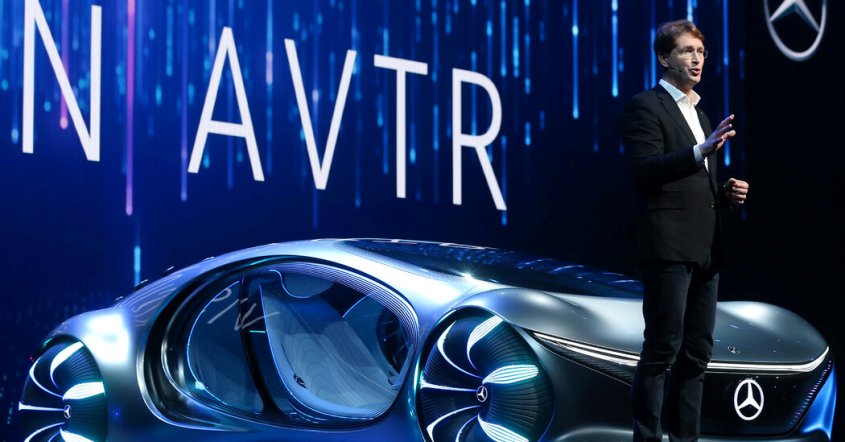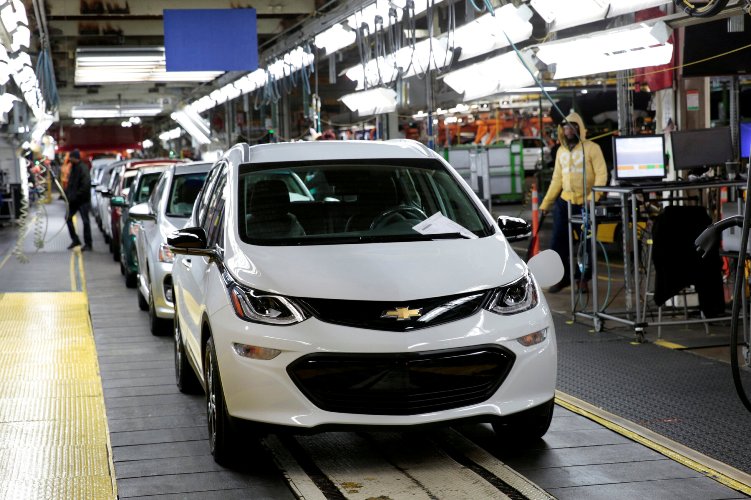
Auto Dinosaurs Show They’re Not Dead Yet - Reviews
"General Motors’ shares have also nearly tripled since March. The company beat analysts’ expectations last week when it reported net profit for the fourth quarter of $2.8 billion, against a loss a year earlier."
A year ago, investors almost left the major global carmakers for dead. Shares of Daimler, General Motors, and Ford Motor were at a 10-year low. Electric vehicle start-ups without any sales were sometimes worth more than traditional automakers with tens of thousands of employees and factories around the world. The pandemic looked as if it would seal the fate of the dinosaurs.

But it turns out that the old behemoths may yet not be doomed. On Thursday, earnings announced by Daimler underscored a remarkable revival by some conventional carmakers. These companies have managed to survive the pandemic, redirect to electric vehicles, and convince stock market investors that they will not let Tesla take their customers without a fight.
Since reaching a low point in March, Daimler shares have tripled and rose again on Thursday after the company said net profit for the year increased from 2019 by almost 50 % to $4.8 billion.
General Motors’ shares have also nearly tripled since March. The company beat analysts’ expectations last week when it reported net profit for the fourth quarter of $2.8 billion, against a loss a year earlier.

In addition to making more money than investors thought was possible in a year of turmoil, the two companies, which date to the early 20th century, have been making decisions that show they grasp the technological changes upending the industry.
Daimler shares spiked after the company said this month that it would splits its car and truck division into separate companies, each with its own stock listing. Daimler, based in Stuttgart, Germany, makes Mercedes-Benz luxury cars and Freightliner trucks.
Ola Källenius, the Daimler chief executive, said the decision to break up the company was intended to give managers more freedom to react to technological change.
“As the speed of the transformation of the auto industries is picking up,” Mr. Källenius said in an interview, “decision-making speed is crucial.”
G.M.’s promise to swear off fossil fuels, though not for another 14 years, set off a chain reaction in the industry. Ford said Wednesday that by 2030, all its passenger cars sold in Europe would run solely on batteries. Jaguar said Monday that all its Jaguar luxury cars and 60 percent of Land Rover luxury S.U.V.s would run solely on batteries by 2030.

Mr. Källenius has avoided making a similar declaration. In many markets where the company is active, there is no infrastructure for electric cars, he pointed out. Therefore, a vow of fossil-fuel abstinence “is not something we should do just to get a headline,” he said.
But all future Mercedes-Benz models will be designed to be electric, Mr. Källenius said. “Our technology path is clear,” he said. “We are going to take a leading position. It’s a tad too early to pick a date for the world when the last combustion engine will leave the production line.”
Investors seem to be rewarding carmakers that show they can build electric cars. Shares of Ford, whose
Mustang Mach-E has gotten good reviews, have doubled since hitting their nadir in March. Shares of the French carmaker Renault have also more than doubled since then; its affordable Zoe subcompact was the best-selling battery-powered car in Europe last year.
Daimler will begin selling several new electric vehicles this year, including the Mercedes-Benz EQS, a counterpart to the company’s top-of-the-line S Class car. The EQS will go on sale in the summer for a starting price probably above $100,000.
“Gradually the financial market is starting to look at our technology portfolio, and everything we have in the pipeline,” Mr. Källenius said.
So far, electric cars are nowhere near as profitable for Daimler and other traditional carmakers as gasoline models. Battery Systems are more costly than conventional engines and transmissions, and automakers are still learning how to manufacture electric cars efficiently. It will take time to achieve the profit margins “we’re used to on the internal combustion side,” Mr. Källenius said.
Daimler’s unexpectedly healthy profit in 2020 was the result of old-fashioned cost-cutting rather than any technological breakthrough. The company reduced its work force by 7,000 employees, or 4 percent, and cut the research and development budget, which Mr. Källenius said was still big compared with competitors.
When the pandemic struck, Daimler quickly dialed back production so it was not stuck with unsold vehicles, Mr. Källenius said.
Even after the sharp gains in their share prices, Daimler and G.M. are still worth only about one-tenth as much on the stock market as Tesla, which makes only a tiny fraction as many vehicles. Investors are dazzled by Elon Musk, the Tesla chief executive, and have more faith in a company that makes nothing but electric cars.
As Mr. Källenius conceded, the dinosaurs still have a lot of convincing to do before investors will believe they have as much potential.
“The financial market is going to wait and see a little bit,” he said. “How is this going to play out?”
Also Read :
TOYOTA COROLLA CROSS HIGH PRICE IN NEPAL
FORD TO GO ALL ELECTRIC IN EUROPE BY 2030
LUXURY CAR BRAND JAGUAR TO GO ALL-ELECTRIC BY 2025
TESLA TO SET UP ELECTRIC CAR MANUFACTURING UNIT IN INDIA





